This article was originally posted on Dragzine here: https://www.dragzine.com/tech-stories/brakes-suspension/step-up-your-bracket-racing-game-with-double-adjustable-shocks/
Racers are always on the hunt for ways to improve their vehicles’ consistency at the track. Suspension tuning is one of the best ways to achieve repeatable performance, and you need the right parts for the job. In this article, we’ll be looking at how moving to adjustable shocks can transform your bracket racing program.
Our Project Number Cruncher Firebird is still rocking a set of OEM-style shocks in the rear. After talking with Eric Saffell at AFCO, we realized those shocks are impacting our 60-foot performance and consistency. We determined the best plan of action was to ditch the OEM shocks in the rear in favor of a set of double-adjustable coilovers. Up front, the Firebird already has coilover shocks, but they are only single-adjustable units with unknown springs, so Saffell suggested we move to a set of double-adjustable shocks and fresh springs there, too.
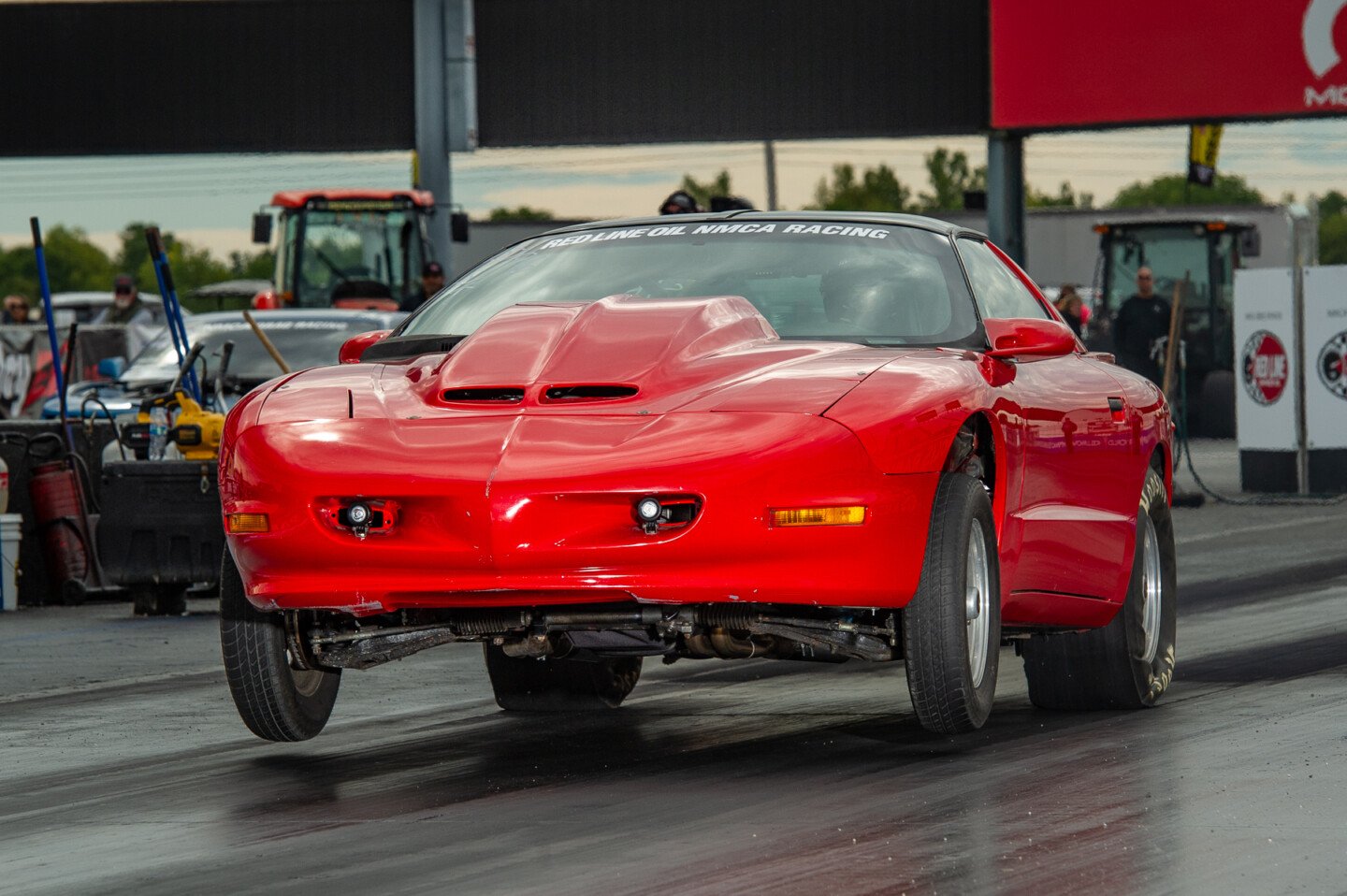
Why You Want To Use Adjustable Shocks
Most cars you see at the drag strip didn’t come with adjustable shocks as original equipment. Passenger vehicles aren’t designed to have a very aggressive ride or feel since most people aren’t trying to drive them to their absolute limits. So, when you start trying to go quicker and faster at the track, you’re going to eclipse what the OEM shocks are capable of in a hurry.
Single- and double-adjustable shocks are the two most popular types of adjustable shocks in drag racing, and are available in coilover and non-coilover configurations. Saffell explains the differences between the two so we have a baseline of information going forward.
“Traditionally, single-adjustable shocks are designed to offer valve adjustment in one direction — rebound or compression. Double-adjustable shocks offer valve adjustment in both directions – rebound and compression, and ideally rebound adjustments don’t bleed over and affect compression and vice versa,” Saffell says.
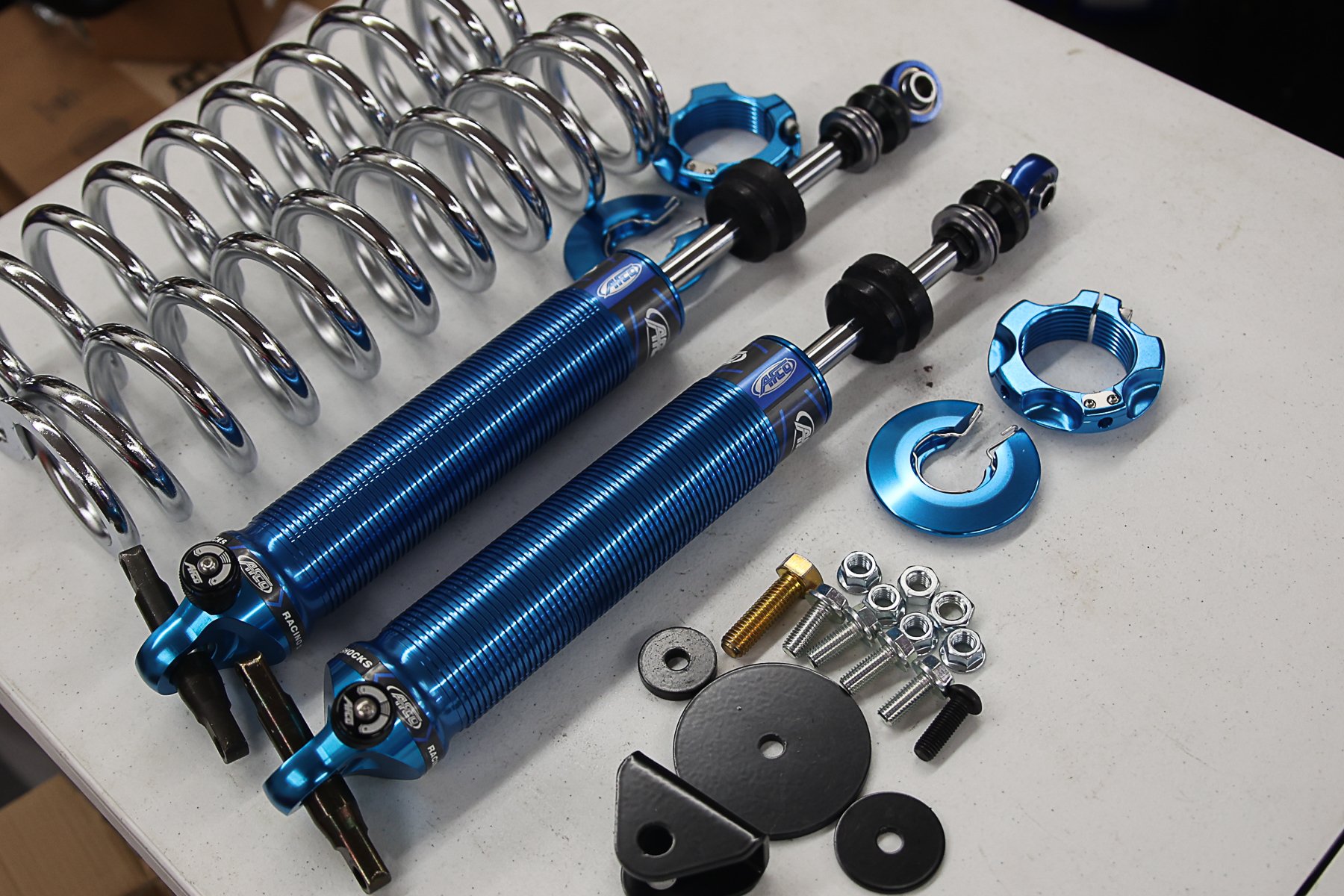 Adjustable shocks are going to open up your tuning window significantly, and allow you to be ready for changing track conditions.
Adjustable shocks are going to open up your tuning window significantly, and allow you to be ready for changing track conditions.
Adjustable shocks give you the ability to optimize how much power you can apply to the racing surface. Traction isn’t a static variable; it can change from round to round or even run to run based on numerous factors. Adjustable shocks are a tuning weapon that help you defeat tricky track conditions.
“The ability to control weight transfer with an adjustable shock provides the tuner with a means to enhance traction,” Saffell states. “Controlling the front to rear weight transfer process is key; weight needs to move rearward, however, you only need to move enough to generate traction. Too much is wasted motion. It can also make the car inconsistent. In the rear, we need to control the ‘hit’ to the rear tires to create enough traction to hook up given the torque’s attempt to spin the tires.”
Now, adjustable shocks on the rear of your vehicle are going to give you more access to traction. The name of the game is getting the right amount of weight to transfer to the rear tires when you need it to happen. Adjustable shocks allow you to control the speed that the weight transfer occurs, so that means you can decide how hard or soft you’ll hit the tire based on the prevailing track and weather conditions. This is done through adjustments to the compression or rebound of the shock via the shock’s adjustment knobs.
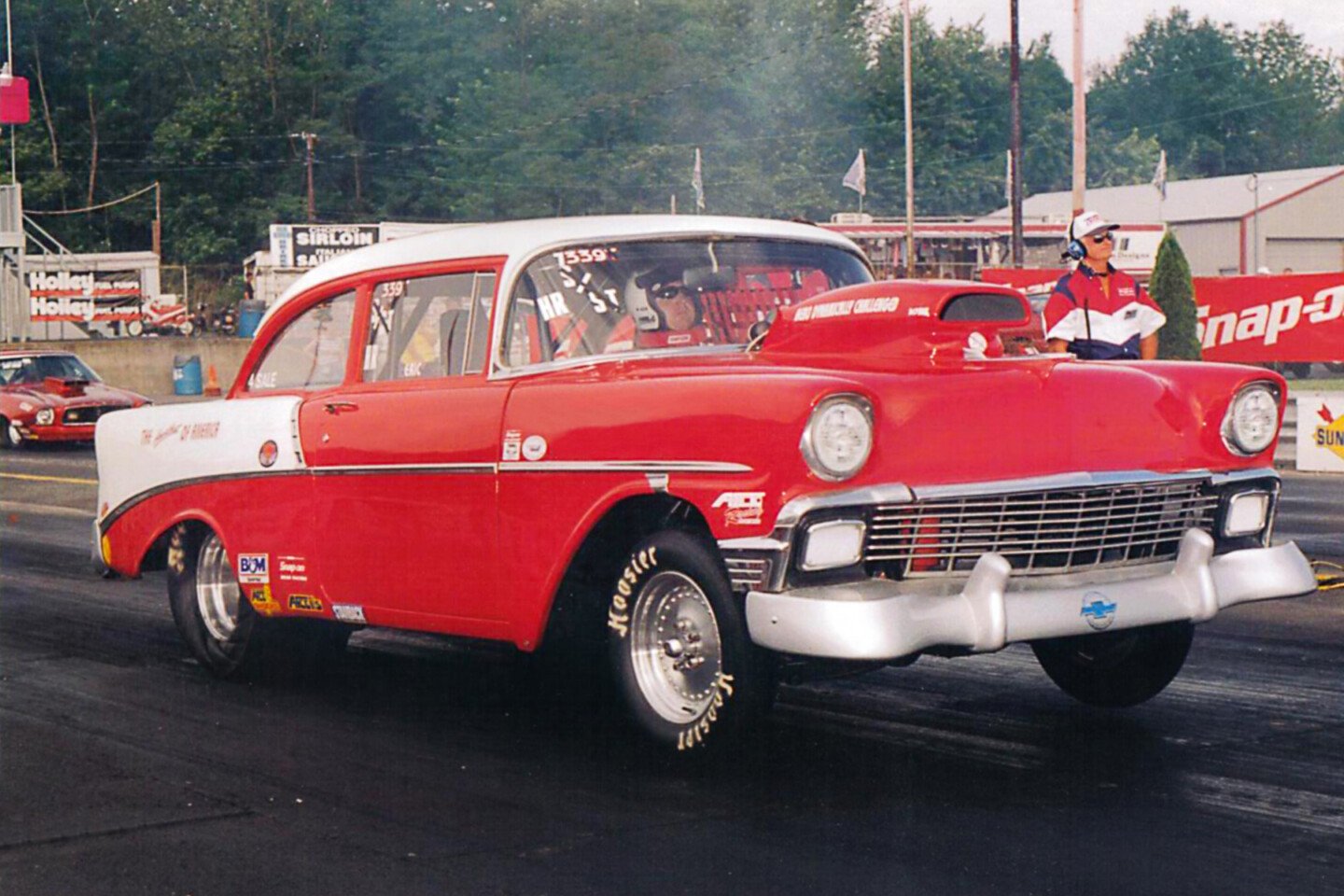
The right set of shocks will have a positive impact on your 60-foot times.
Saffell adds some detail as to why adjustable shocks on the rear of your car are an important tuning tool.
“Adjustable shocks are essential if you’re planning on making a few adjustments to your rear suspension. Any change to the rear suspension and pinion angle can be enhanced with a corresponding shock valve change. As horsepower increases over time, we can adjust the suspension to ‘keep up’ with the change in horsepower and torque and gain back consistency.”
Let’s dig into why you should consider adjustable shocks for the front of your vehicle. As we covered previously, these shocks are going to give you the ability to manipulate how your vehicle transfers weight to the rear tires. If there’s not much traction available, you can soften the degree of rebound the shock has to compensate for in the poor conditions. A fixed-valve shock won’t give you that option.
“An adjustable shock will give you the ability to control compression and can help with cars that wheelie. We can stiffen compression and prevent damage to components. Also, stiffening compression can help the car land smoothly and prevent front-end geometry from fluctuating. Eliminating drastic toe changes will help make a car more consistent and make better passes,” Saffel explains.
How Adjustable Shocks Enhance Suspension Tuning
There are two things drag racers can’t get enough of, data and tuning tools. Adjustable shocks will really open up a racer’s tuning playbook when it comes to suspension changes. Non-adjustable shocks put you in a box and limit what you can do, while adjustable shocks let you decide if your vehicle is going to dead hook, or give you the ability to generate wheel speed through controlled tire slip.
How you set the tire when the car launches is critical. You want the tires to have equal amounts of traction and react the same each time. Saffel talks about how adjustable shocks enhance a racer’s ability to make this happen.
“The tire’s footprint must remain flat and the tire can’t drive over itself on the leading edge of the footprint. Shocks that don’t adequately control transfer will allow the car to ball up the slick on the leading edge of the footprint and then the tire “hops” over that leading edge traction is temporarily lost, then regained, but consistency is compromised. An adjustable shock can control the hit to the tire and help keep it planted and smooth.”
Double adjustable shocks are going to give you more control over how your vehicle reacts.
Fans love big wheelies, but wheelies don’t make you go any faster and can lead to some serious damage when they don’t go according to plan. Your shocks have an impact on how big and long a wheelstand will last, and if you can’t adjust your shocks, you can’t control the wheelie. An adjustable shock is going to allow you to calm a wheelstanding vehicle. Controlling how hard and long the car wheelies is going to provide you with more consistency.
“Tuning your suspension via [height] adjustable shocks is going to improve your vehicle’s performance in numerous ways. With [an adjustable] spring-on shock package, you can adjust corner weights which will improve traction and E.T. prediction. You can control how a vehicle lands from a wheelie and improve consistency. You can adjust how much ‘hit’ the rear tire receives as dictated by various conditions. This means traction is enhanced through proper adjustment, and better passes are achieved,” Saffell states.
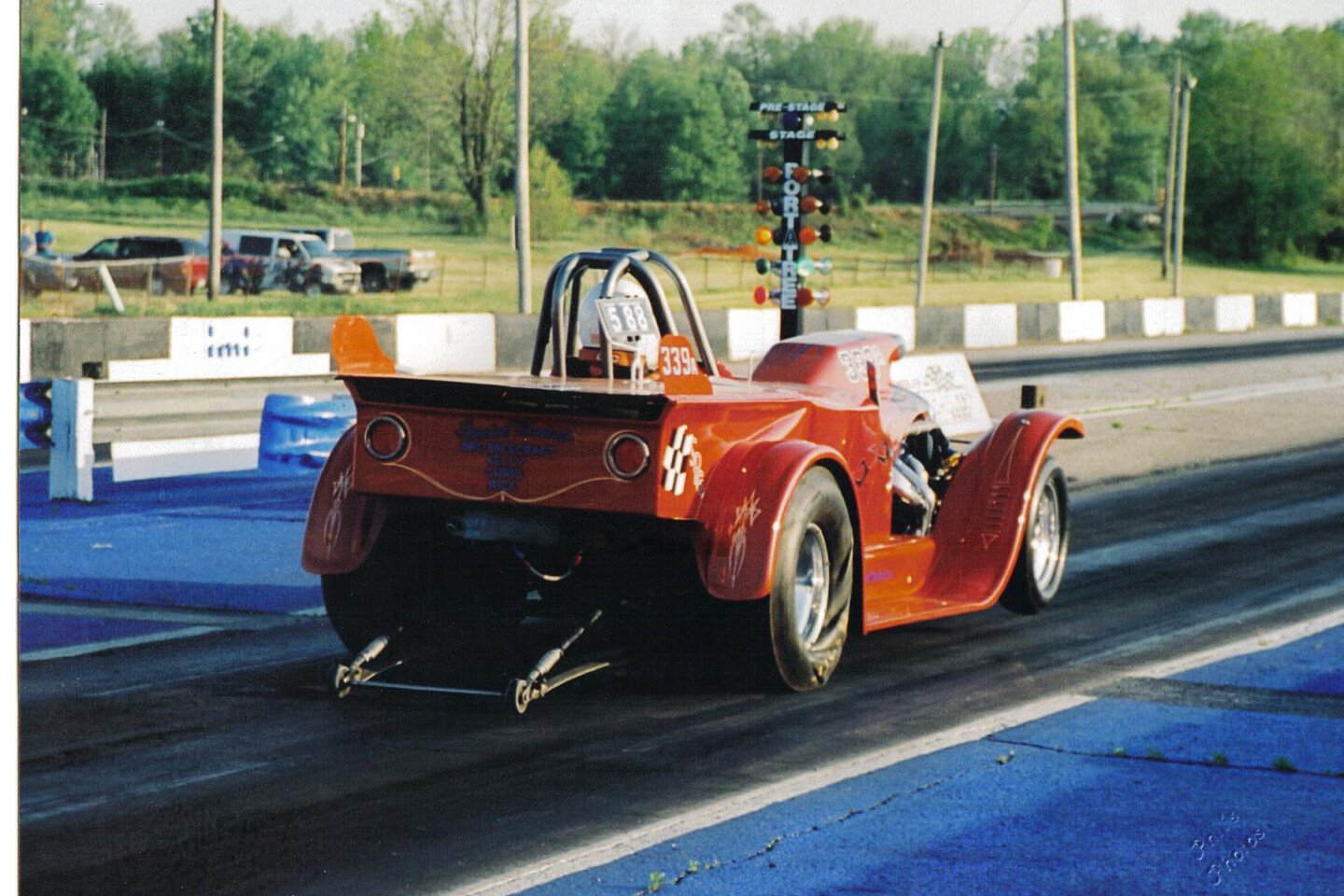
The Advantages Of Using Adjustable Shocks In Bracket Racing
Bracket racers are the perfect candidates for adjustable shocks — the level of tuning they provide will have the largest impact on the vehicle’s performance on the front half of the track.
Controlling the weight transfer will give the racer a chance to improve their reaction time based on whether the front tires are going upward or outward when the vehicle launches. You can also adjust how much traction the vehicle will see when you speed up the weight transfer to the rear tires via a softer rebound. This will help bracket racers who have a vehicle that launches violently gain more consistency.
Saffell expands on how bracket racers can benefit from adjustable shocks, saying, “If a car hooks, then spins, we can adjust the shocks to smooth out the launch. Typically, this occurs with ladder bar cars. At launch we see the car plant the tires aggressively, the sidewalls flex and wrinkle — tire is dead hooked. Then, if we are watching the video we may see the tire release, the sidewall goes smooth, the tire turns, and traction is lost. In the next frame, the tire wrinkles again, and traction is returned. However, consistency is compromised.”
Adding adjustable rear shocks to Project Number Cruncher will allow us to become more aggressive with our suspension tune-up.
With the problem identified, Saffell explains how to fix it. “The potential fix is to stiffen up the shock on both ends. Slow down the rebound to not hit the tires as hard, and stiffen compression to help keep the tire from rebounding/bouncing upward and allowing the tire to slip.
“If we’re making a change in tire brand, compound, construction (bias to radial), we are traveling to different tracks, or making power-level changes, a corresponding shock change should accompany any of these. Possessing a shock package that is tunable and makes noticeable changes to the performance of the chassis improves performance and your chances of success,” Saffell says.
Project Number Cruncher’s Shock Changes
Project Number Cruncher came with a set of single-adjustable AFCO shocks with unknown springs up front. In the rear, the previous owner had mini-tubbed the car, but kept the OEM shocks in the OEM location and moved the springs. While this combination works, there’s no adjustment available, and we’ve already maxed out what this setup can handle.
Project Number Cruncher's single-adjustable front shocks are being replaced with a new set of AFCO double-adjustables. The OEM-style rear shocks are being thrown in the trash and replaced with a set of double-adjustable coilover shocks.
We worked with Saffell and provided him with some basic information about the car to assist with shock and spring selection. For the front, a set of AFCO’s double-adjustable Eliminator BNC2-valved shocks were used and paired with 300 lb/in springs. In the rear, another set of double-adjustable Eliminator shocks got the call and were paired with a set of 125 lb/in springs.
To complete the coilover conversion, we’re going to use a set of Madman & Co. Racing shock relocation brackets. Brian Jeffrey, owner of Madman, says these brackets are important to use when you’re moving to a coilover suspension on a fourth-generation F-body.
The Madman relocation brackets are required if you want to run coilover shocks in the OEM position on a fourth-gen F-body.
“On a factory-style rearend the bolt actually runs perpendicular to the housing, so it puts the shock into a bind when you try to roll pinion angle into the factory-style torque arm. The relocation bracket turns the mounting bolts for the shock parallel to the housing. This allows the shock to pivot on the bolt using the bearing, so the shock won’t bind,” Jeffrey explains.
Our next steps will be to get all of these parts installed and then head to the track for some testing. The current suspension under Project Number Cruncher has netted a best 60-foot of 1.40, but we know there’s a lot left in the car. These shocks and springs should allow us to be more aggressive with the car’s setup in regards to the power we throw at it in the front half of the track. Hopefully, we’ll see some consistent 1.30-range 60-foot times and not lose any consistency.
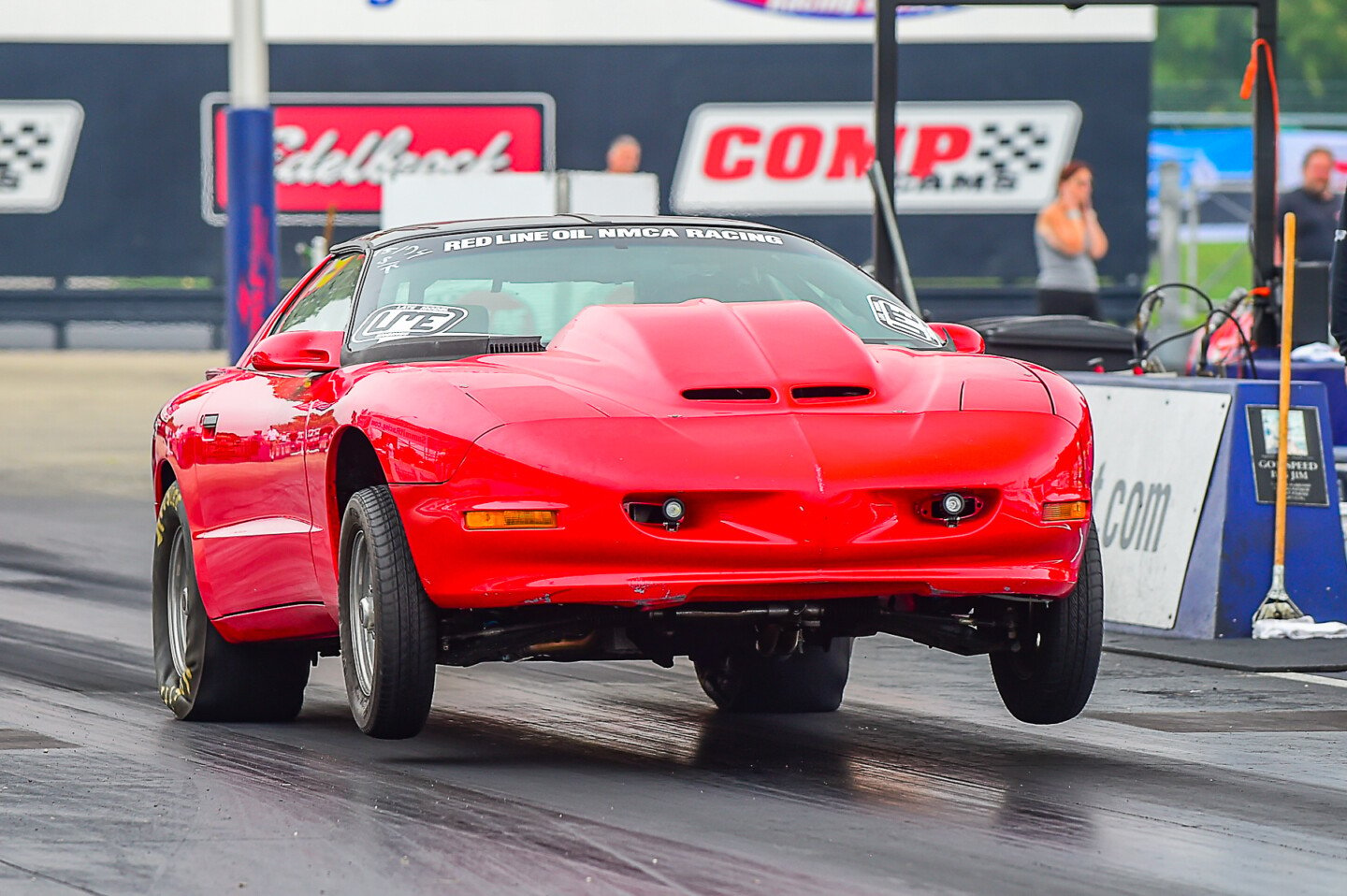
We’re confident the new shocks will allow us to really get after Project Number Cruncher’s 60-foot times.
The adjustability of these shocks is going to pay big dividends for most racers. Now, you can get the most out of changes that you’ve made to the vehicle in other areas, or use all the horsepower that’s been added through a change to your engine package.
Make sure you check out Project Number Cruncher’s page right here on Dragzine to get caught up on what we’ve done to the car and how it’s performed at the track after the shocks have been dialed in.